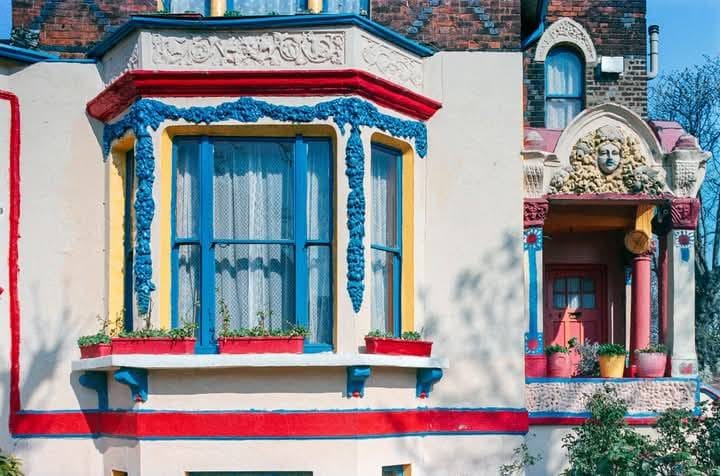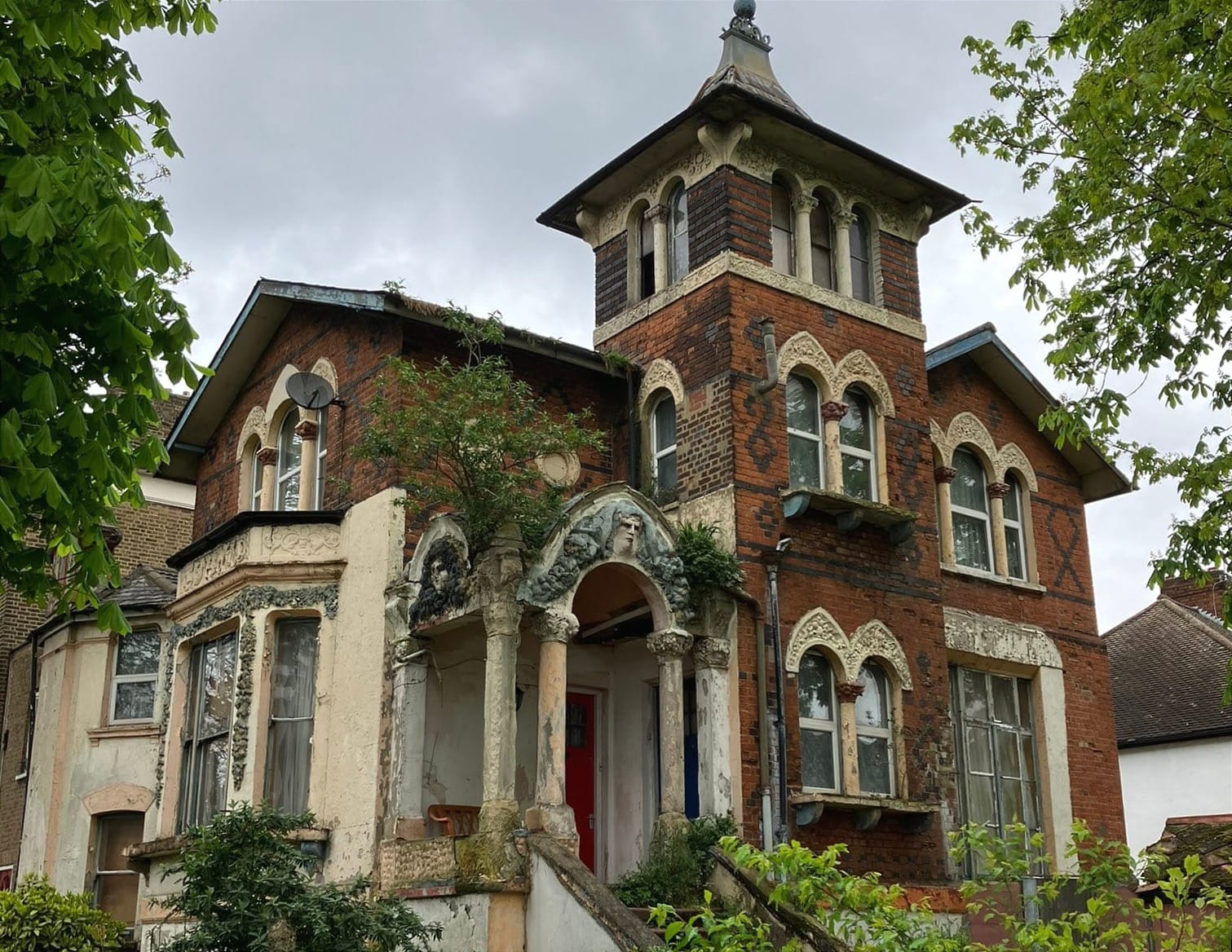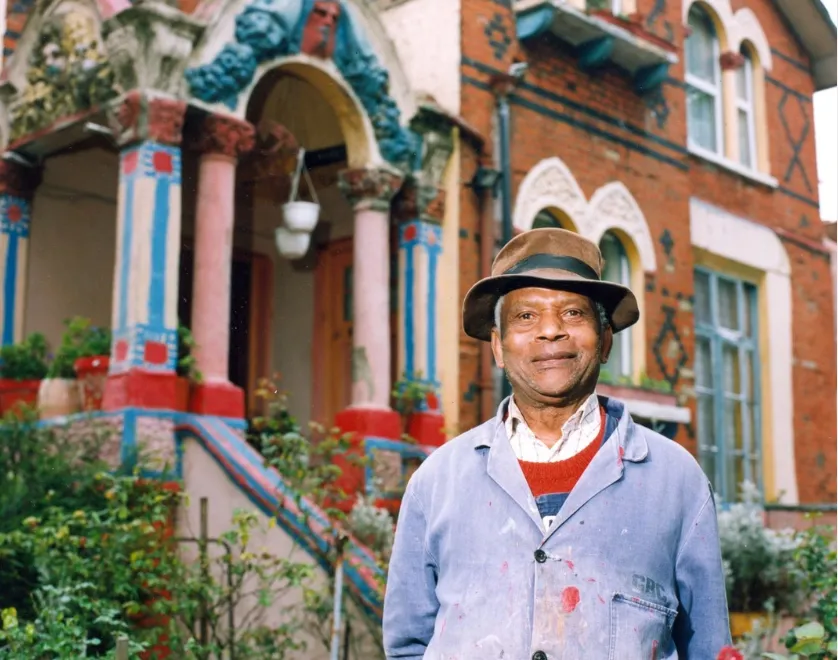It was the summer of 1997, and Helena Appio went to knock at the door of 62 Loampit Vale in Lewisham. “I’ve lived in south London most of my life,” says Appio, serving tea and banana bread in her pristine Gipsy Hill home. “I’ve known that house forever.”
The house, a large Italianate mansion with a columned entrance and steep tower, would have been interesting enough purely for its high Victoriana. What was especially notable, though, was its colour: bright pink and snowy white, with complex lattices of baby blues and custard yellows adorning its window frames and entrance pillars. A shock of colour in a grey London suburb, it was the product of its elusive owner, Mr Pink.
Though Appio was then working her way up the BBC, her real calling was documentaries about outsider perspectives. “That’s probably from having come to England myself in the 1960s,” the Nigerian-born Appio explains, “and that being a weird time to come to England, with Enoch Powell and later the National Front.” When the Arts Council put out a call for submissions on the theme of naive and outsider artists, she immediately thought of Pink.

“At that point in the 1990s, people in the media were not looking for that sort of person,” says Appio. She squeezes an inch of air between her right thumb and forefinger. “He opened the door about this much.” Pink asked her to come back next week. “I just kept coming back,” she says.
Even decades later, Appio still speaks with hushed awe and reverence when she recounts entering Pink’s house for the first time. “He had made three-dimensional patterns all over the walls with cement, all painted in mosaics, a bit like stained glass,” the filmmaker says. “The sitting room was painted in colours and full of wonderful objects. These were things that maybe he’d collected in his years as a refuse collector.” Appio pauses. “It was this extraordinary, eclectic, colourful space.” After a little persuading, Mr Pink finally agreed. Appio could make her film.
A Portrait of Mr Pink, Helena Appio, 1997
Today, the house turns heads on the busy street for different reasons.
Mr Pink died, aged 92, in 2017. Since then, the house has become dilapidated, down-at-heel, and is visibly decaying. The paintwork is parched and cracked, and few feet climb the staircase leading into the villa. In bygone decades, the busts of Christ that decorate the mansion entrance watched over a thriving and carefully maintained garden. Today, they largely spy weeds and overgrowth. A graffiti tribute is carved low onto a wall: “Nothing £2m and a lick of paint won’t fix.” But would it? Standing at Loampit Hill and watching crows take flight from the gaps in the tiled roof, it’s hard to be so sure.

Apart from a delightfully eccentric 2006 shoot at the house for Vogue Korea, Appio’s 1998 film, A Portrait of Mr Pink, is the best document of its former glory. The 15-minute film periodically does the rounds on nostalgic Facebook groups for south London boomers, a visual symbol of a proper past populated by proper characters. A generation or two below, Redditors — maybe teenagers passing on the 126 or 321 buses as they head to the nearby college — speculate, fairly, about the “haunted house” in their midst.
For others, though, Mr Pink’s house is a very present concern. “There is nothing like it in London in terms of a house that represents Caribbean identity externally,” says Garden Museum director Christopher Woodward, who has been working to find a way to conserve the house.
After Pink’s death, his children inherited the house. Since then, no agreement has been reached on what happens next. The children have declined invitations to meet with interested parties. Of course, any solution must put the family first — their financial needs, their housing needs, their memories — but time is running out. 62 Loampit Hill is now in fatal danger of becoming damaged beyond repair.

Comments
How to comment:
If you are already a member,
click here to sign in
and leave a comment.
If you aren't a member,
sign up here
to be able to leave a comment.
To add your photo, click here to create a profile on Gravatar.






